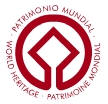Economy of Tarragona (Spain)
Tarragona (Catalonia, Spain). Port, Economy


Tarragona is the capital of the province of Tarragona (Catalonia, Spain). It has a population of 140,323 people. Tarragona is situated 100 kilometers south of Barcelona.


The industrial sector (in particular the chemical and petrochemical) and services (particularly tourism) are the economic pillars of Tarragona, the second area of economic development in Catalonia, only behind Barcelona. in the recent years Tarragona has positioned itself as a major International exhibition and conference centre.
Tarragona City Council.
The service sector accounts for 60% of provincial GDP, employs 50,000 workers and generates 4,000 million Euros. “Port Aventura” in Salou is one of the largest thematic parks in the World.

Tarragona Exhibition centre (Source: Palacio Congresos).
The Food industry. In the province of Tarragona, there are important food companies. The “Priorat wine” or olive oil, are considered some of the best in the World.
The Port of Tarragona is one of the largest in the Mediterranean. Tarragona also has high-speed Train (AVE, 2 hours from Madrid) and Reus Airport.

Besides the cultural richness, Tarragona has one of the most beautiful and clean beaches in the World. A few minutes from downtown; we can find beaches like Waikiki or “Playa Larga” (Long Beach). Oddly enough, beaches are nearly deserted and without buildings.

Waikiki

Castellers. These human towers are doing in the region for more than 200 years. In 2010, “Els castells” were declared Intangible Cultural Heritage of Humanity by UNESCO.
Castells are human towers built by members of amateur groups, usually as part of annual festivities in Catalonian towns and cities. The traditional setting is the square in front of the town hall balcony. The human towers are formed by Castellers standing on the shoulders of one another in a succession of stages (between 6 and 10). Each level of the tronc, the name given to the second level upwards, usually comprises two to five heavier built men supporting younger, lighter-weight boys or girls.
The pom de dalt - the three uppermost levels of the tower - comprises young children. Anyone is welcome to form the pinya, the throng that supports the base of the tower. Each group can be identified by its costume, particularly the color of the shirts, while the cummerbund serves to protect the back and is gripped by Castellers as they climb the tower. Before, during and after the efficiency, musicians play a variety of the traditional melodies on a wind instrument known as a gralla, setting the rhythm to which the tower is built.
The knowledge required for raising castells is traditionally passed down from generation to generation within a group, and can only be learned by practice.
(Source: UNESCO).
In India; we can find a similar tradition.

Castells Competition, Tarragona 2010
In Reus, near Tarragona is the Gaudí Centre, dedicated to the great architect Antoni Gaudí.

(Source: Gaudí Centre Reus).
Tarragona is very near to the centre Miró (Mont-Roig) dedicated to the famous painter Joan Miró.

(Source: Centro Miró).
You can also visit the Pau Casals Foundation (El Vendrell), dedicated to the famous Catalan cellist and composer.

(Source: Fundación Pau Casals).
Tarragona has important museums: National Archaeological Museum, Museum of Modern Art, the Diocesan Museum of Tarragona, Early Christian Necropolis Museum of Tarragona.

Casa Castellarnau (Foto: Museu History Tarragona)

Casa Canals (Foto: Museu History Tarragona).
A large number of fiestas and popular traditions reaffirm that Tarragona is an open, participative town, whose people identify with the popular culture in the region. There are two dates in honor of two patrons of Tarragona: Saint Magín, on 19th August, and especially, Saint Tecla, the Major Feast, with celebrations lasting from 15th to 24th September and which attract all the townsfolk out into the streets with a host of musical, folkloric, theatrical, gastronomic, pyrotechnic and children's events.. Furthermore, it organises “Tarraco Viva,” a festival dedicated to the city's Roman past.

Tarragona Aliga (Source: Turisme Tarragona).

Major athletes are born in Tarragona: Albert Cabestany won the World Cup Indoor Trial. Natalia Rodriguez was second in the World Championships. Óscar Cadiach, a renowned climber who has done eight peaks of 8,000 meters. Tarragona also has the Nastic, football club, and the Basketball Club of Tarragona.

(Source: Trial Indoor Tarragona).
Natural areas. The Natural Park of Delta del Ebro, Benifallet caves or Sierra del Montsant are other attractions in the province.
(c) EENI Global Business School (1995-2024)
We do not use cookies
Top of this page




